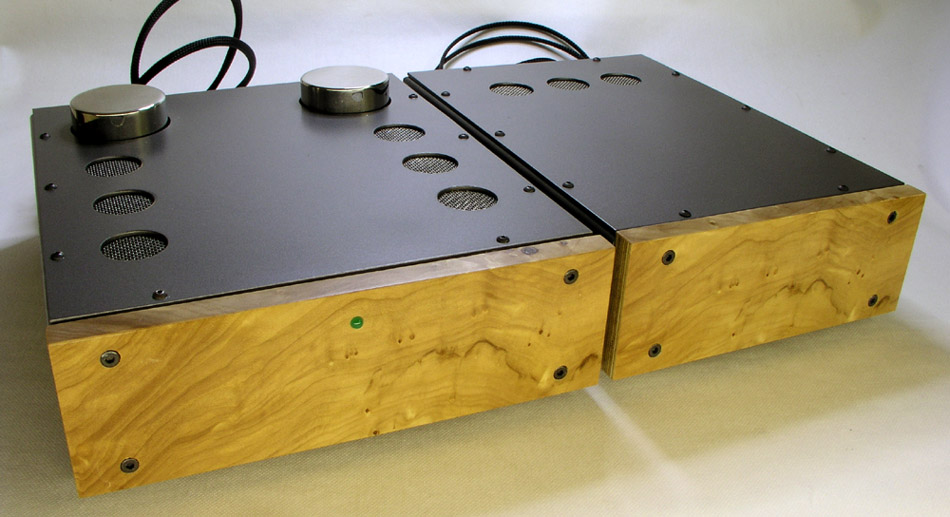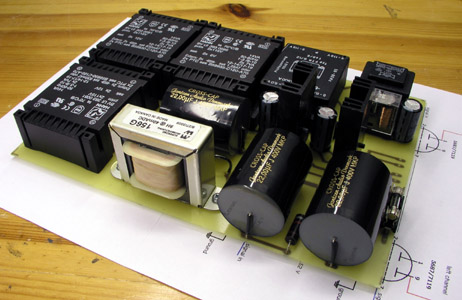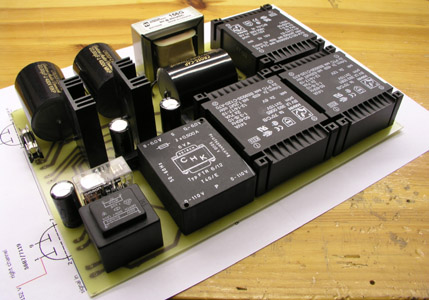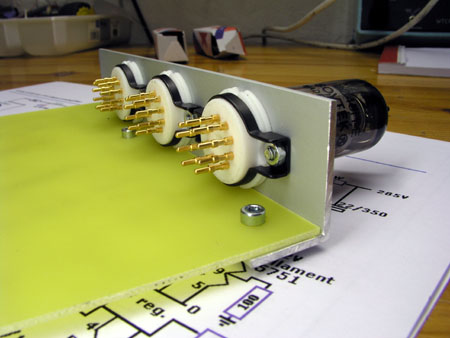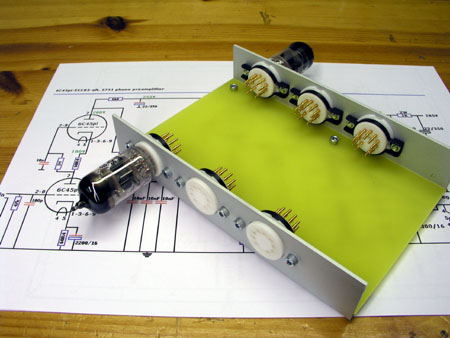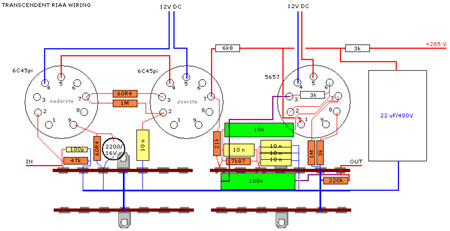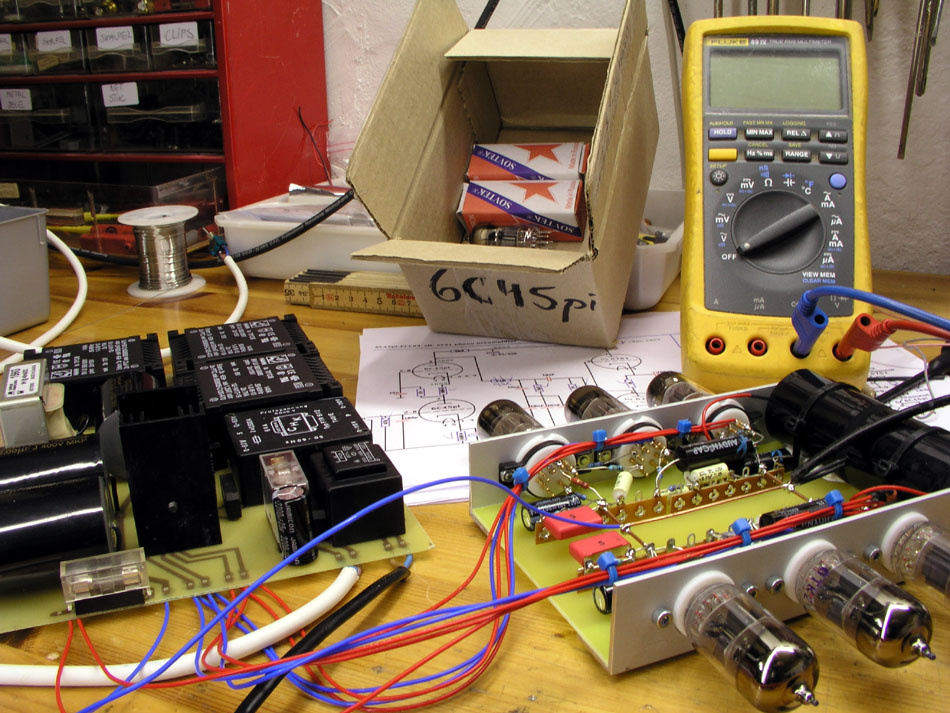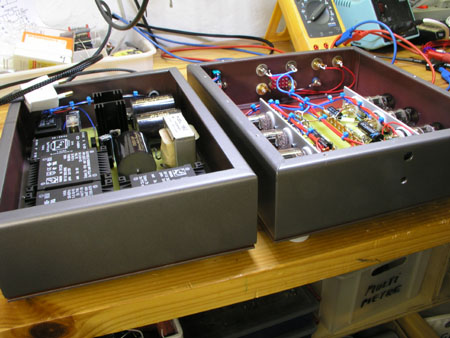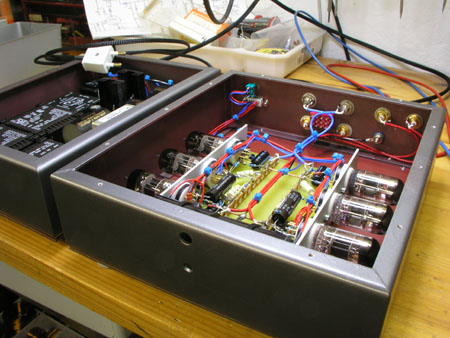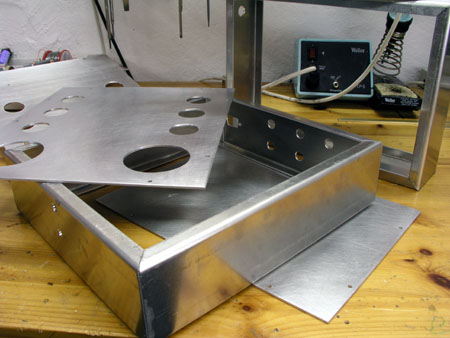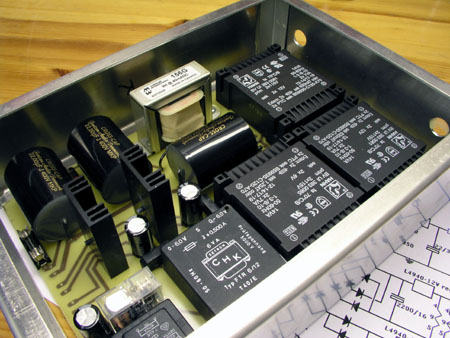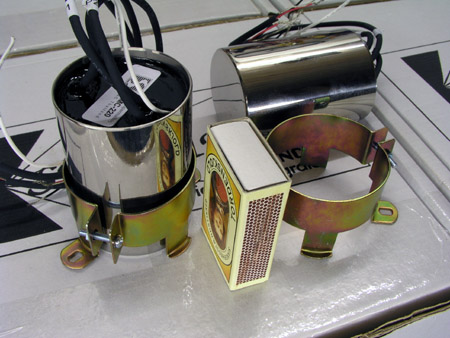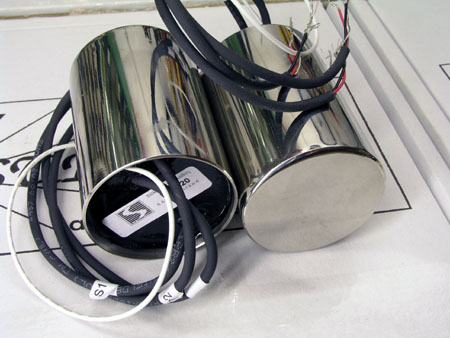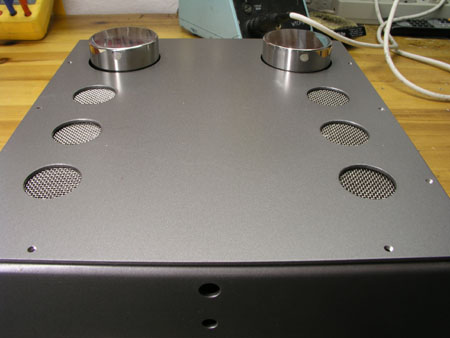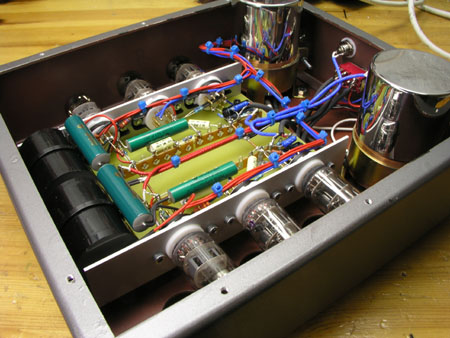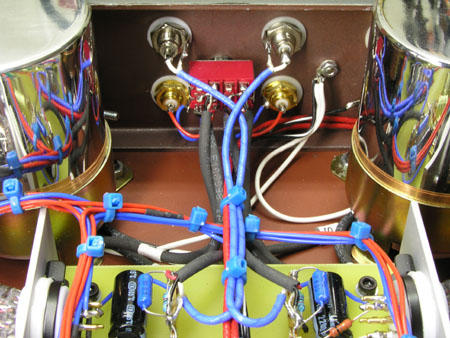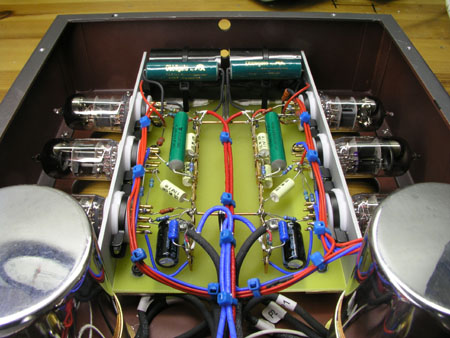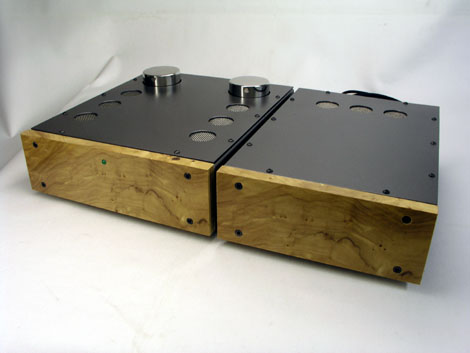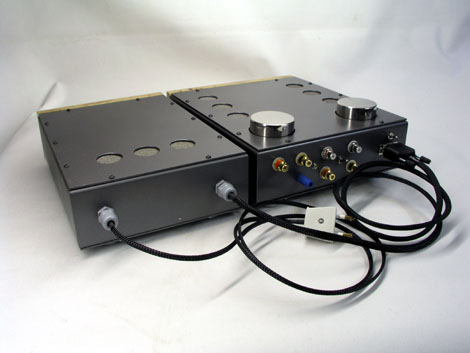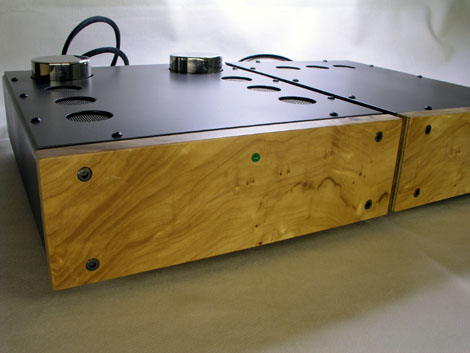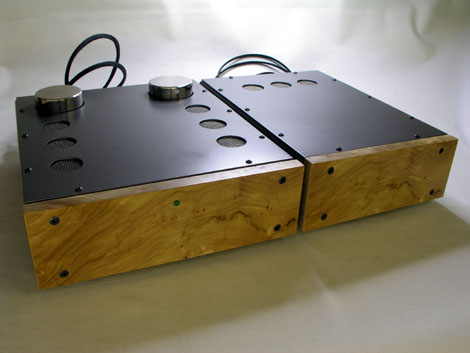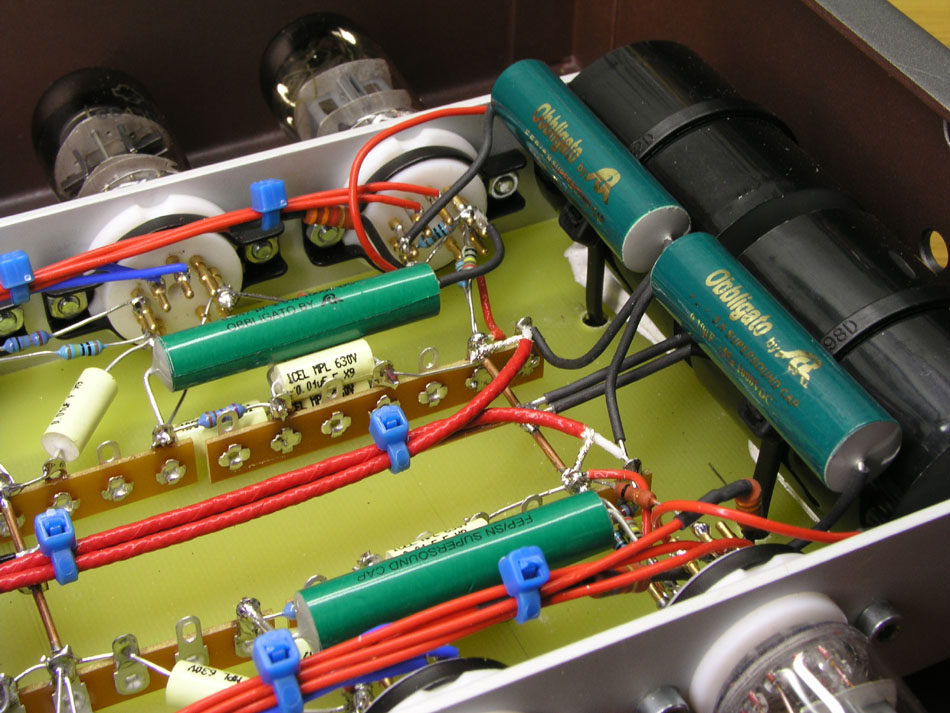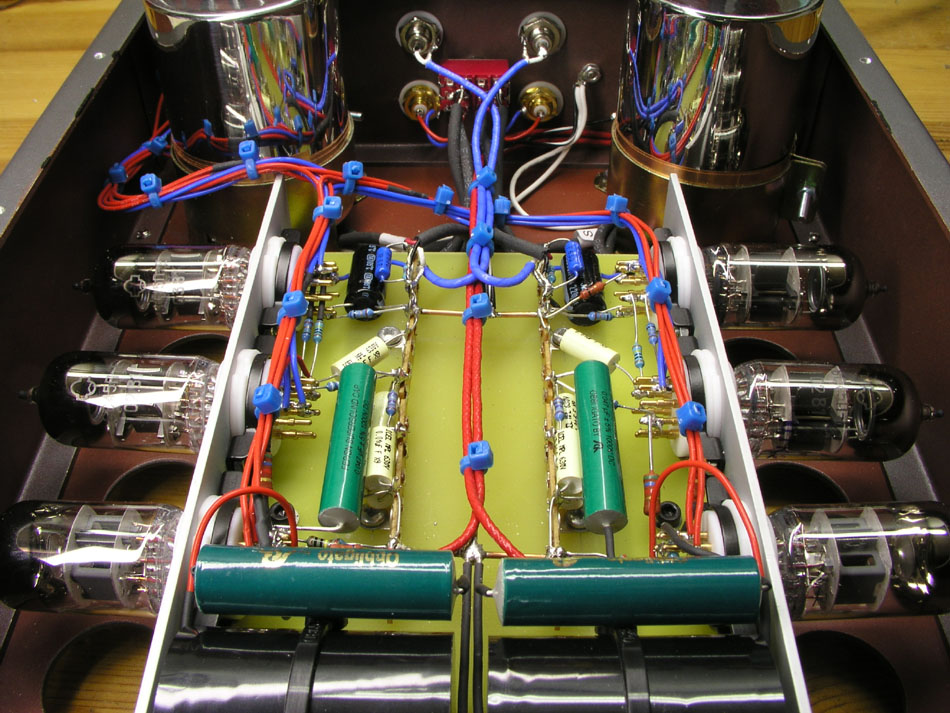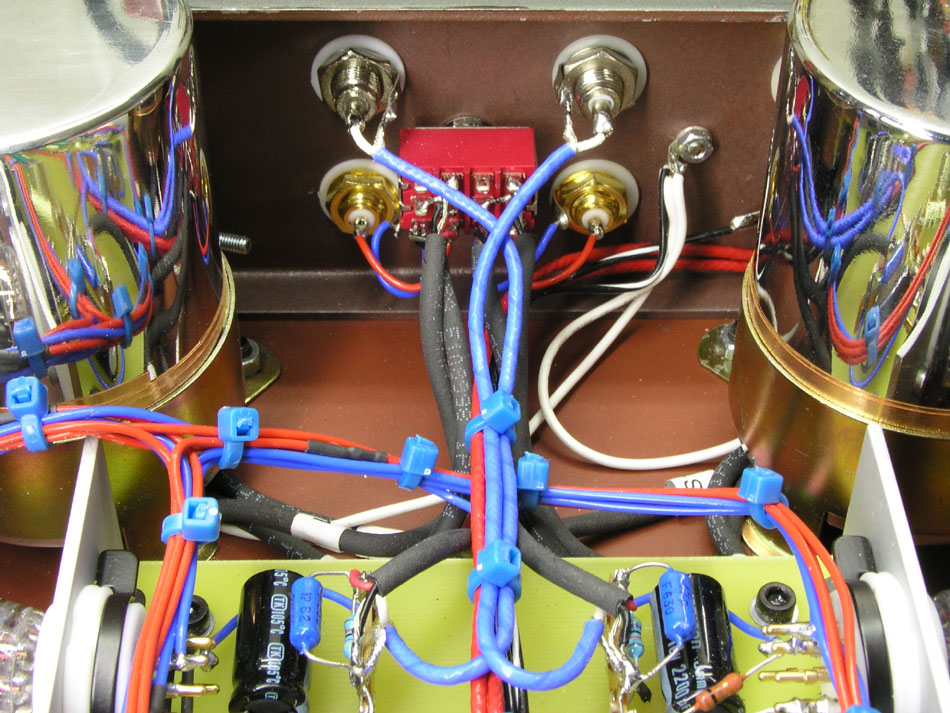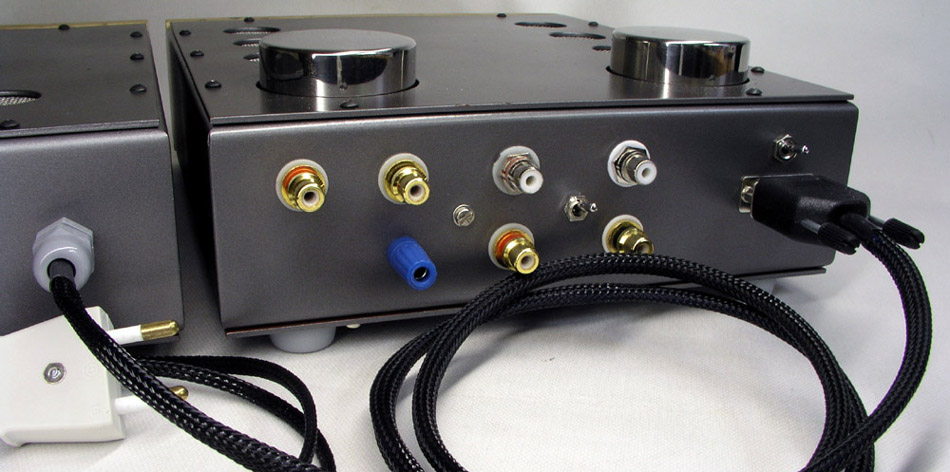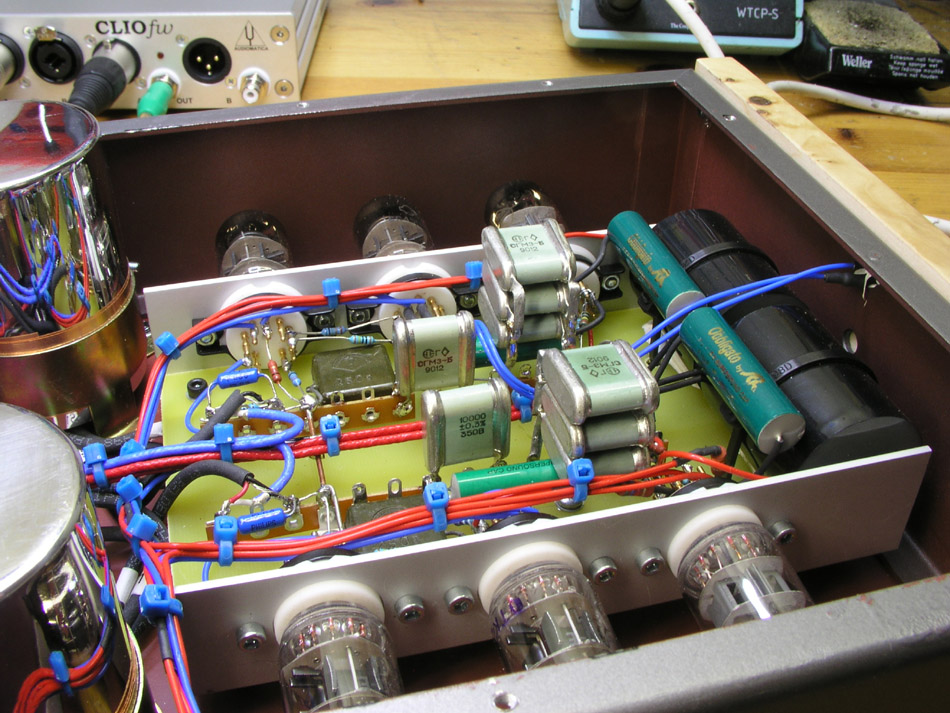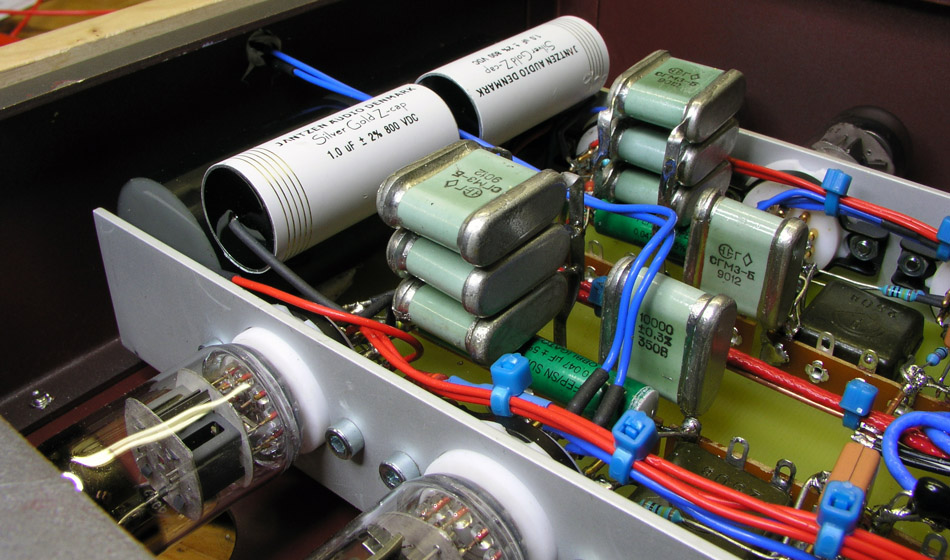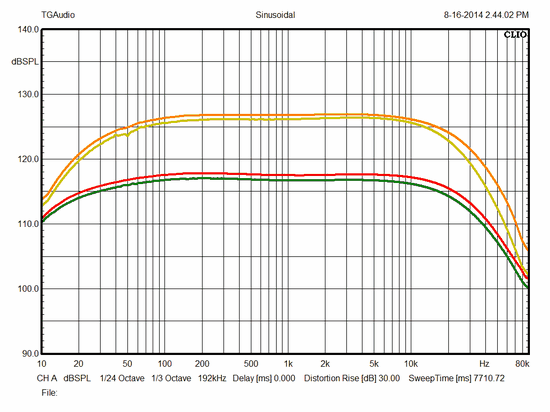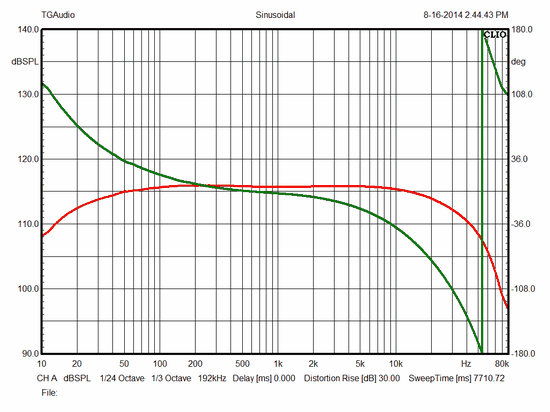Phono stage based
on Transcendent RIAA
POWER SUPPLY AMPLIFYING STAGE CABINET SCHEMATICS MEASUREMENTS
|
Installing the SILK MC trafos for my Dynavector XX2 mkII cartridge made an external power supply necessary and the PSU section was placed in a separate cabinet making the whole thing quite bulky. Re-building the TRANSCENDENT phono stage has be on the to-do list for a long time and besides getting a smaller unit next to the grammophone, improving sound from hardwired amplifications stage, full PP capacitor power supply and better caps in riaa-equalisation step wouldn't hurt either. While waiting for the right time to start building, a number of RIAAs have been auditioned and nothing came up that convinced me to go elsewhere. For the separate power supply I decided to make a circuit board as the number of components and overall complexity would make a hard-wired solution look like a bird's nest. No tubed regulation was decided either as I don't think it pays off. Re-building may not be the right word as all parts will be new including power supply, thus a semi-hard-wired copy. Finishing the phonostage and setting it up for the first time is nerve wrecking! Will it be silent or take you into a new hum-war? I was exactly minded for another round of hum fighting, but this proved an unnecessary worry. Hooking it up and turning the line stage volume control max only left the usual sssshhhh of the universe. Yes, I do think it sounds a tad better but I don't blame you for thinking me biased from all the working hours. Most parts were bought locally (ELFA, not cheap but around the corner), except for: Teflon sockets from Hong Kong (search eBay). MC trafos from SAC Thailand (read below). Tubes bought on eBay from Russia (search eBay). Hammond choke came from Finland (hard to find Hammond + decent shipping rates for a single unit). |
| The Power Supply Board (BACK TO TOP) |
Having
a special transformer made with all secondary
windings would be rather costly - and having a range of
spare transformers - the solution below was decided.
Included is a small 9V transformer allowing the power
supply to be turned on/off from the RIAA box via a
low-voltage DC line. Hunting for expensive Black Gate
electrolytic caps is fortunately no longer needed and
even for (valve) power amps, film caps seems a much
better solution - if space allows, because film caps
certainly are bigger than the old electrolytic caps. Here
22 uF/400V PP Cross Caps from Jantzen is used throughout.
|
